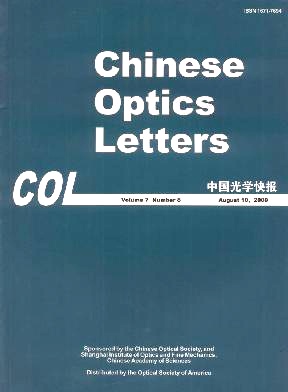Influence of interface roughness on reflectivity of tungsten/boron-carbide multilayers with variable bi-layer number by X-ray reflection and diffuse scattering  Download: 519次
Download: 519次
[1] A. F. Jankowski, L. R. Schrawyer, and M. A. Wall, J. Appl. Phys. 68, 5162 (1990).
[2] J. F. Seely, G. Gutman, J. Wood, G. S. Herman, M. P. Kowalski, J. C. Rife, and W. R. Hunter, Appl. Opt. 32, 3541 (1993).
[3] D. L. Windt, E. M. Gullikson, and C. C. Walton, Opt. Lett. 27, 2212 (2002).
[4] F. Wang, Z. Wang, Z. Zhang, W. Wu, H. Wang, S. Zhang, S. Qin, and L. Chen, Opt. Precision Eng. (in Chinese) 13, 28 (2005).
[5] B. Ma, Z. Wang, H. Wang, F. Wang, W. Wu, Z. Zhang, S. Qin, and L. Chen, Act. Opt. Sin. (in Chinese) 25, 1581 (2005).
[6] Z. Zhang, Z. Wang, W. Wu, H. Wang, F. Wang, C. Gu, S. Qin, L. Chen, W. Hua, and Y. Huang, Nucl. Technol. (in Chinese) 28, 900 (2005).
[7] Z. Zhang, Z. Wang, J. Zhu, F. Wang, Y. Wu, S. Qin, and L. Chen, Chin. Phys. Lett. 23, 2678 (2005).
[8] Z. Zhang, Z. Wang, J. Zhu, Y. Wu, B. Mu, F. Wang, S. Qin, and L. Chen, Chin. Phys. Lett. 24, 3365 (2007).
[9] N. K. Pleshanov, Nucl. Instrum. Methods Phys. Res. A 524, 273 (2004).
[10] N. K. Pleshanov, N. G. Kolyvanova, S. V. Metelev, B. G. Peskov, V. M. Pusenkov, V. G. Syromyatnikov, V. A. Ul’yanov, and A. F. Schebetov, Phys. B 369, 234 (2005).
[11] J. Qin, J. Shao, K. Yi, and Z. Fan, Chin. Opt. Lett. 5, 301 (2006).
[12] E. Spiller, D. Stearns, and M. Krumrey, J. Appl. Phys. 74, 107 (1993).
[13] S. Zhang, J. Zhu, F. Wang, Z. Zhang, Z. Shen, Z. Wang, H. Zhou, and T. Huo, Opt. Instrum. (in Chinese) 28, 137 (2006).
Min Dai, Zhong Zhang, Jingtao Zhu, Xiaoqiang Wang, Jing Xu, Xiuhua Fu, Liang Bai, Qiushi Huang, Zhanshan Wang, Lingyan Chen. Influence of interface roughness on reflectivity of tungsten/boron-carbide multilayers with variable bi-layer number by X-ray reflection and diffuse scattering[J]. Chinese Optics Letters, 2009, 7(8): 08738.





